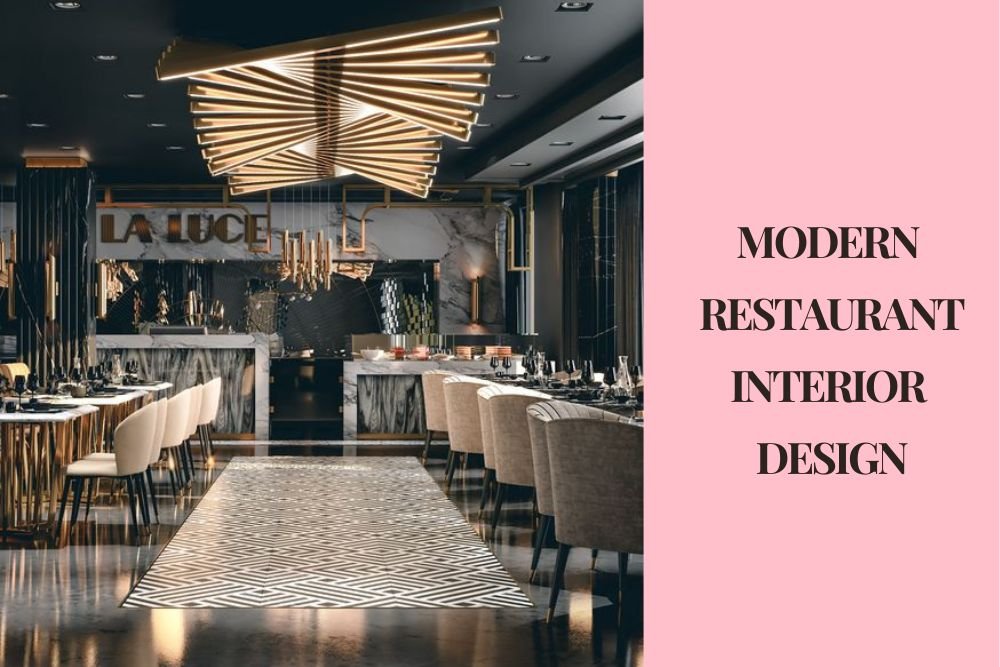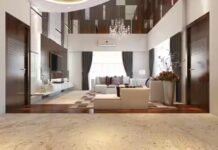Both casual and fine dining inspire modern restaurants. A modern restaurant business blends the upscale details of fine dining with the quick service of a fast-casual establishment. The design of a modern restaurant creates a sleek, contemporary, and simple appearance. Modern restaurant businesses are both memorable and expressive.
The interior design of your restaurant will create a great first impression in the minds of your customers, making them want to come back again and again.
Modern Restaurant Interior Design Ideas
1. Give a Warm Welcome To Your Guests
Modern restaurant interior designs need to have an attractive entrance to give a warm welcome which makes your first impression the best. You need to make sure that your restaurant’s entrance is thoroughly welcoming. You can do this with attention-seeking signage or a concept-driven waiting area.
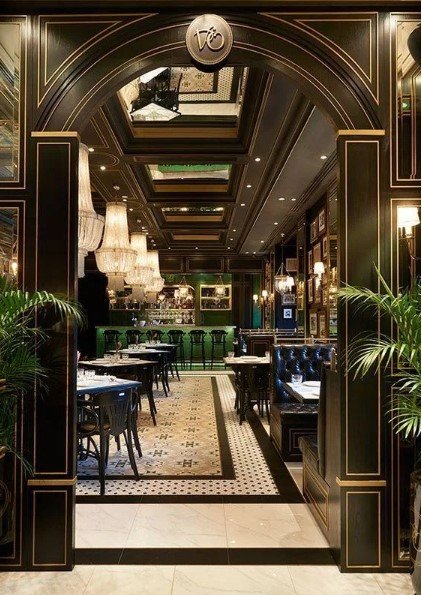
Ideas:
- Attention-Seeking Signage: Use bold, inviting signage at the entrance to attract attention and create a welcoming vibe.
- Concept-Driven Waiting Area: Design a waiting area that reflects your restaurant’s theme, providing guests with a preview of the dining experience.
- Warm Lighting: Use warm, inviting lighting fixtures at the entrance to set a cozy tone right from the start.
- Personalized Greetings: Train staff to greet guests warmly and personally as they enter, enhancing the welcoming atmosphere.
- Comfortable Waiting Options: Offer comfortable seating in the waiting area to make guests feel relaxed and valued.
Benefits:
- Enhanced First Impressions: Guests feel immediately welcomed, increasing the likelihood of return visits.
- Positive Brand Perception: A warm welcome sets a positive tone for the entire dining experience, reinforcing your brand’s hospitality.
- Improved Customer Experience: Comfortable waiting areas reduce perceived wait times and increase customer satisfaction.
- Increased Customer Loyalty: Guests remember and appreciate the warm welcome, making them more likely to recommend your restaurant.
- Higher Revenue Potential: A welcoming entrance can attract passersby and increase foot traffic.
2. Make Accent Walls
An accent wall is one of the must-have elements of a restaurant’s interior design. What better way to advertise your brand than an entire wall? Accent walls can complement your restaurant’s theme or adorn the brand’s colors. A restaurant that serves authentic ramen or Pan Asian cuisine can benefit from a wall adorned with Japanese mythological creatures.
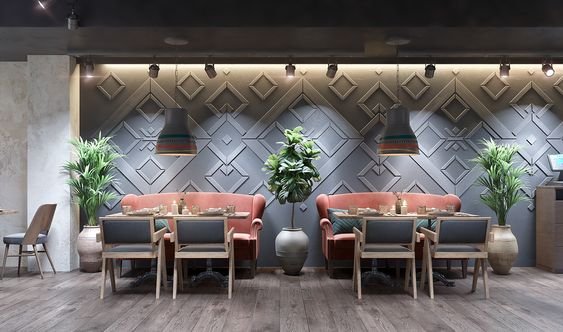
Ideas:
- Branded Wall: Create an accent wall that prominently features your restaurant’s logo or brand colors.
- Thematic Murals: Commission local artists to paint murals that align with your restaurant’s cuisine or concept.
- Texture-Based Walls: Use textured materials like wood or stone for an accent wall to add depth and interest.
- Interactive Walls: Install interactive digital walls where guests can engage with your menu or story.
- Seasonal Displays: Change accent walls periodically to reflect seasons or special events, keeping the decor fresh.
Benefits:
- Brand Awareness: Accent walls reinforce your brand identity and make a memorable impression on guests.
- Enhanced Ambiance: Well-designed accent walls can create a specific atmosphere, enhancing the overall dining experience.
- Social Media Appeal: Eye-catching accent walls encourage guests to share photos on social media, increasing your restaurant’s online presence.
- Differentiation: Unique accent walls set your restaurant apart from competitors and attract curious diners.
- Cost-Effective Branding: Accent walls are a cost-effective way to refresh decor and align with branding strategies.
3. Modern Lighting
Today, there are a number of incredible light fixtures available to experiment with in modern restaurant interior designs. Lighting can significantly enhance the value of modern restaurant interiors, but the biggest thing is not overdoing it. Lighting should complement your theme and brand colors and not clutter your restaurant. Moreover, it is important to have a clear vision and make sure that you don’t clutter up your restaurant by adding too many lights.
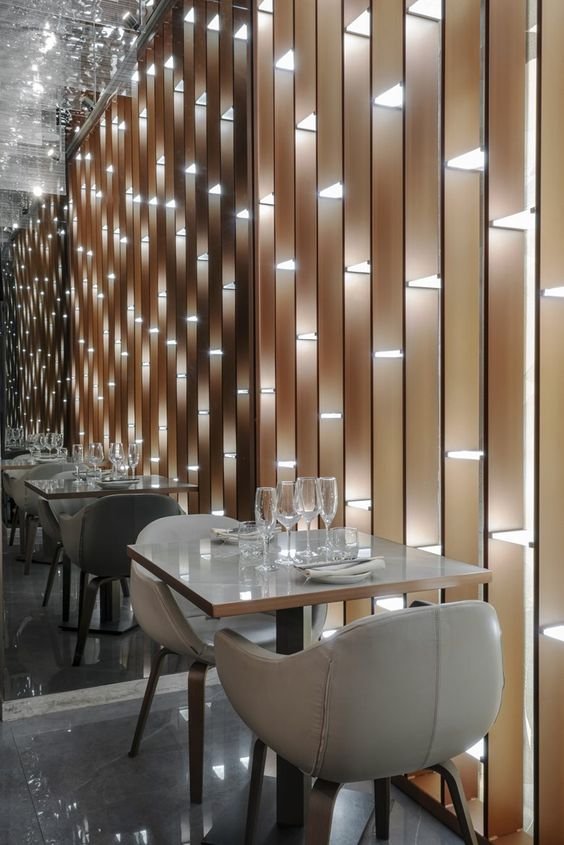
Ideas:
- Statement Fixtures: Install statement lighting fixtures that serve as focal points in different areas of the restaurant.
- Ambient Lighting: Use ambient lighting to create a warm and inviting atmosphere throughout the dining area.
- Task Lighting: Ensure adequate task lighting in food preparation and dining areas for functionality and ambiance.
- Dimmable Options: Provide dimmable lighting options to adjust the mood throughout the day or evening.
- Energy Efficiency: Incorporate energy-efficient LED lighting to reduce operational costs and environmental impact.
Benefits:
- Atmospheric Enhancement: Modern lighting enhances the restaurant’s ambiance, influencing guest mood and dining experience.
- Visual Appeal: Well-designed lighting fixtures add visual interest and complement the restaurant’s interior design.
- Functional Efficiency: Proper lighting supports efficient operations for staff and enhances customer satisfaction.
- Flexible Atmosphere: Adjustable lighting allows for different atmospheres throughout the day or for special events.
- Sustainability: Energy-efficient lighting reduces utility costs and demonstrates environmental responsibility.
4. Choose a Modern Theme
It is crucial to choose a theme for your restaurant decor in order to create memorable interior design ideas. Your guests shouldn’t be overwhelmed by too many different styles. It indeed gives the essence of a modern restaurant interior design when you have a cool theme defined for your restaurant.
Instead of just leaving your customers with a wide range of traits to look at and be confused about, you want to create a very distinct experience. Choose a Mumbai-themed restaurant and incorporate all the city has to offer into your restaurant design.

Ideas:
- Cultural Fusion: Blend multiple cultural elements into a cohesive theme that reflects your menu’s diversity.
- Industrial Chic: Embrace industrial materials and decor for a contemporary urban aesthetic.
- Nature-Inspired: Use natural elements like wood and plants to create a calming and eco-friendly atmosphere.
- Technology Integration: Incorporate high-tech gadgets or interactive displays that align with a futuristic theme.
- Artistic Expression: Showcase local art pieces or installations that resonate with your restaurant’s modern theme.
Benefits:
- Distinctive Identity: A well-defined theme differentiates your restaurant and creates a unique dining experience.
- Customer Engagement: Guests are intrigued by themed environments, encouraging longer stays and return visits.
- Memorable Experience: Themes create memorable dining experiences that guests are likely to share with others.
- Marketing Advantage: Thematic restaurants attract niche markets and generate buzz through word-of-mouth.
- Interior Cohesion: Themes guide interior design choices, ensuring consistency and aesthetic appeal.
5. Use of Bold Colors
An interior design trend that will last is adding pops of color to the interior of a modern restaurant. You can use some bold colors like dark reds because it has been scientifically proven that the color stimulates hunger. Otherwise, you can try deep blues, which adds energy to a restaurant’s atmosphere. Make sure all colors complement each other.

Ideas:
- Feature Wall: Paint one wall in a bold color to serve as a focal point in the dining area.
- Furniture Accents: Use bold-colored furniture pieces to add pops of color throughout the restaurant.
- Artistic Flair: Incorporate bold-colored artwork or installations that complement your restaurant’s aesthetic.
- Textile Choices: Choose bold-colored textiles such as curtains or upholstery for added vibrancy.
- Lighting Effects: Use colored lighting to enhance the mood or highlight specific areas within the restaurant.
Benefits:
- Psychological Impact: Bold colors stimulate appetite and create a lively dining atmosphere.
- Visual Interest: Bold colors add visual excitement and draw attention to key areas or features.
- Brand Reinforcement: Colors can reinforce your brand identity and create a cohesive visual experience.
- Space Transformation: Bold colors can visually alter the perception of space, making it feel larger or more intimate.
- Contemporary Appeal: Incorporating bold colors keeps your restaurant’s decor current and trendy.
6. Incorporate Natural Elements
It’s a cool idea to incorporate organic elements into modern restaurant interior design. Natural elements like flora, lumber, and rock are an increasingly popular trend. In addition to creating a soothing and alluring environment, these components bring the essence of the outdoors inside. Natural elements also enhance the visual appeal of an establishment’s interior aesthetics by adding texture and dimension.
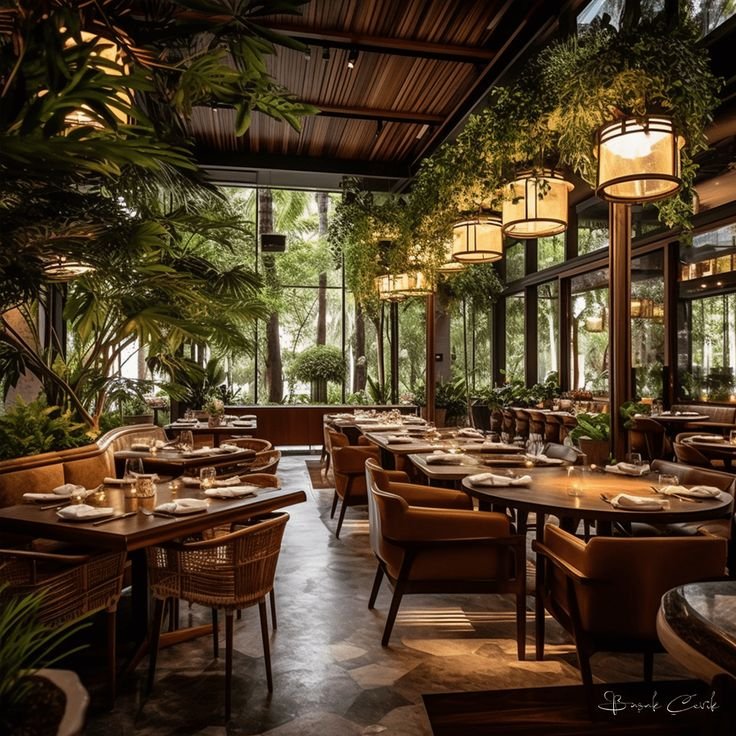
Ideas:
- Living Walls: Install vertical gardens or living walls to introduce greenery and improve air quality.
- Natural Materials: Use materials like reclaimed wood, stone, or bamboo for flooring, walls, and furniture.
- Water Features: Incorporate small indoor water features or fountains to create a tranquil ambiance.
- Natural Lighting: Maximize natural light with large windows or skylights to connect indoor spaces with the outdoors.
- Biophilic Design: Integrate natural patterns and textures into decor elements like carpets, wallpapers, or artworks.
Benefits:
- Biophilic Benefits: Natural elements reduce stress, enhance well-being, and create a soothing atmosphere for guests.
- Aesthetic Appeal: Natural materials and greenery add a touch of elegance and sophistication to the restaurant’s interior.
- Environmental Consciousness: Using sustainable materials promotes eco-friendly practices and appeals to environmentally conscious diners.
- Unique Atmosphere: Natural elements create a unique dining environment that stands out from traditional restaurant designs.
- Connection with Nature: Guests appreciate the calming effect of natural elements, improving overall dining satisfaction.
7. Minimalism Is The Key
Interiors of dining establishments are no exception to the trend of minimalism in recent years. It is a popular technique to design with pared-down elements and a sleek, contemporary look. An eatery’s interior design can be sophisticated and ageless by embracing unpretentious and understated components.
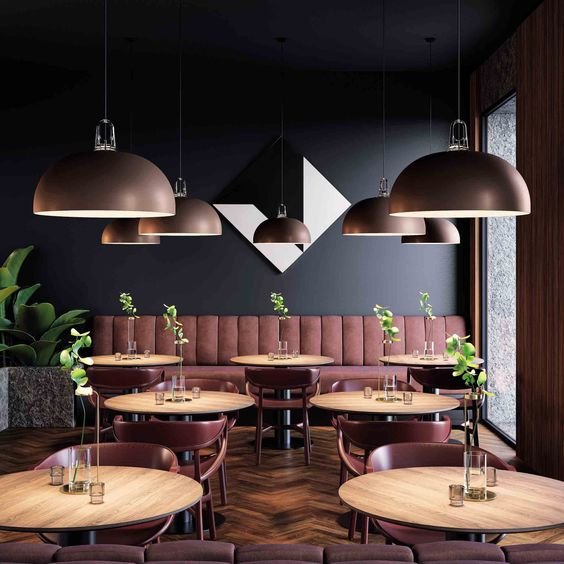
Ideas:
- Simple Furnishings: Opt for sleek and minimalist furniture designs with clean lines and neutral colors.
- Decluttered Spaces: Avoid overcrowding with unnecessary decor or furniture to maintain a spacious feel.
- Monochromatic Palette: Stick to a monochromatic color scheme to create a harmonious and calming environment.
- Functional Design: Focus on functionality and practicality in layout and furnishings to enhance usability.
- Negative Space: Embrace negative space to highlight key design elements and create a sense of openness.
Benefits:
- Elegant Simplicity: Minimalist design exudes sophistication and elegance, appealing to discerning diners.
- Easy Maintenance: Simplified decor and furnishings require less upkeep, reducing operational costs.
- Timeless Appeal: Minimalist interiors have a timeless quality that remains stylish and relevant over time.
- Enhanced Focus: Clean, uncluttered spaces allow guests to focus on the dining experience and food quality.
- Versatility: Minimalist decor can easily adapt to different themes or seasonal changes with minimal adjustments.
8. Reflect Your Brand’s Identity
The first and foremost question you must ask yourself is, what is your brand’s identity? Is it funky? Is it classic? The restaurant should be designed in such a way that it reflects your brand effectively. As an example, if you run a hip, casual restaurant, you can use quirky furniture and bright colors. A modern or chic restaurant, on the other hand, can have high-end furniture and spacious interiors.
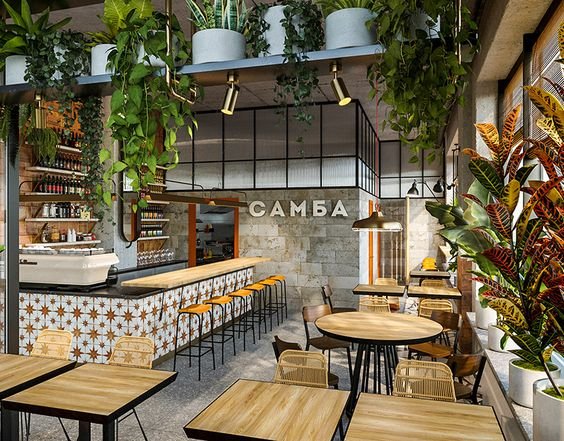
Ideas:
- Storytelling Decor: Use decor elements that tell the story of your brand’s origins, values, or inspirations.
- Color Psychology: Choose colors that reflect the personality and values of your brand, creating a cohesive identity.
- Customized Artwork: Commission artwork or murals that embody the spirit and ethos of your brand.
- Uniform Design Language: Ensure consistency in design elements across branding materials, decor, and menu.
- Interactive Elements: Incorporate interactive displays or digital features that engage guests with your brand story.
Benefits:
- Brand Consistency: Reflecting your brand identity in decor reinforces brand recognition and loyalty among customers.
- Customer Connection: Guests feel a deeper connection with your brand when they experience its identity through decor.
- Differentiation: A distinct brand identity sets your restaurant apart from competitors in a crowded market.
- Emotional Engagement: Reflecting brand values through design can evoke positive emotions and enhance guest experience.
- Memorable Impressions: Consistent branding creates a lasting impression that encourages repeat visits and referrals.
9. Ensure Classic Designs
The sleek and unadorned aesthetic of restaurant design is popular, but there is also a trend toward incorporating classic elements. Restaurant interior designs can be enhanced by timeless accents such as chandeliers, intricate moldings, and elegant fabrics. Incorporating contemporary restaurant interior design ideas with contemporary twists can give eateries a modern restaurant look that appeals to a wide audience.
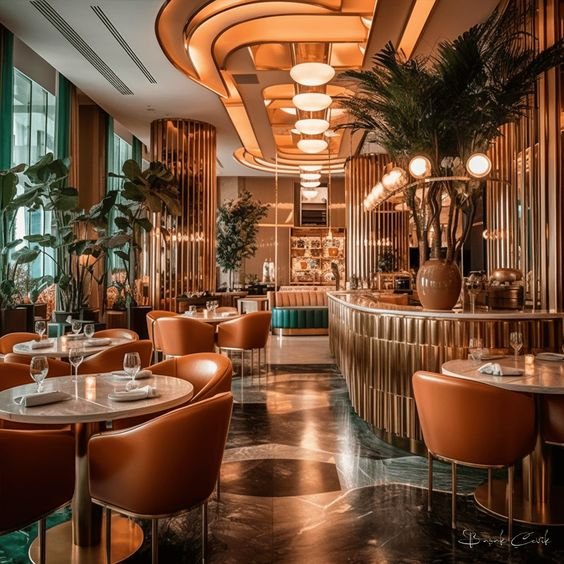
Ideas:
- Timeless Furnishings: Incorporate classic furniture pieces like chandeliers, leather sofas, or antique tables.
- Architectural Details: Use traditional architectural elements such as moldings, arches, or columns.
- Vintage Accents: Integrate vintage decor items like retro light fixtures, framed artworks, or ornate mirrors.
- Luxurious Fabrics: Choose high-quality fabrics such as velvet, silk, or linen for upholstery and curtains.
- Formal Table Settings: Set tables with classic tableware and elegant place settings for a refined dining experience.
Benefits:
- Sophisticated Atmosphere: Classic designs create a refined and elegant ambiance that appeals to upscale diners.
- Historical Charm: Traditional elements add a sense of history and cultural richness to the restaurant’s atmosphere.
- Perceived Value: Classic designs often convey a sense of luxury and exclusivity, enhancing the perceived value of dining.
- Cross-Generational Appeal: Classic decor appeals to a wide demographic, from older patrons who appreciate tradition to younger guests seeking timeless elegance.
- Longevity: Classic designs have enduring appeal, making them a wise investment that can withstand evolving design trends.
10. The Importance of Comfort
Incorporate comfortable seating, such as plush chairs and cozy booths, into modern restaurant interior design to create a welcoming atmosphere. A comfortable modern restaurant can encourage customers to linger and enjoy their meal, resulting in higher customer satisfaction.
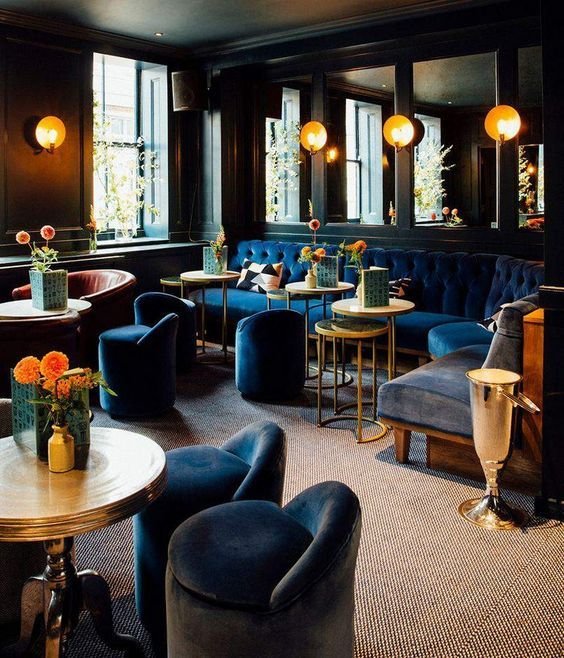
Ideas:
- Ergonomic Seating: Choose comfortable chairs and booths with ergonomic support for prolonged sitting.
- Soft Furnishings: Use plush cushions, throws, and rugs to create a cozy and inviting atmosphere.
- Adjustable Lighting: Provide adjustable lighting options to accommodate different preferences and moods.
- Acoustic Design: Incorporate acoustic panels or materials to reduce noise levels and improve dining comfort.
- Temperature Control: Ensure proper heating, ventilation, and air conditioning (HVAC) systems to maintain a comfortable dining environment.
Benefits:
- Customer Satisfaction: Comfortable seating and ambiance enhance overall dining satisfaction, encouraging repeat business.
- Extended Dining Time: Comfortable environments encourage guests to linger longer, increasing per-customer spending.
- Positive Reviews: Guests are more likely to leave positive reviews and recommend your restaurant based on comfort.
- Health Benefits: Ergonomic seating and proper environmental controls contribute to guests’ physical well-being.
- Competitive Advantage: Comfortable dining spaces differentiate your restaurant and attract discerning diners seeking a relaxing experience.
11. Choose Furniture Wisely
Unlike other retail businesses, restaurants usually have minimal space, so investing in furniture pieces that fit well in your space without making it look cluttered or crowded is imperative. If you are going to use your furniture often, you should make sure it is comfortable and durable. Also, check if it is easy to clean and maintain, another important factor for business owners.
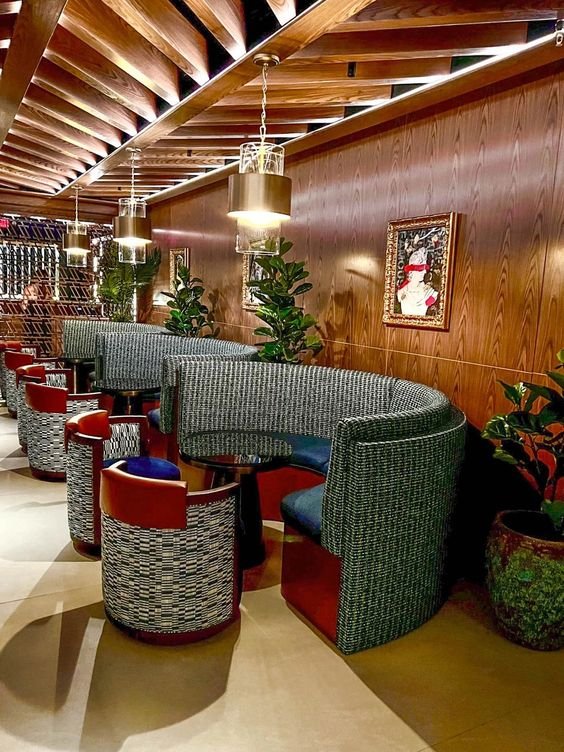
Ideas:
- Versatile Seating: Use modular or stackable chairs and tables to accommodate different group sizes and configurations.
- Comfortable Seating: Prioritize comfort with padded chairs, ergonomic designs, and supportive cafe seating ideas.
- Durable Materials: Choose furniture made from durable materials like metal, wood, or high-quality plastics for longevity.
- Aesthetic Harmony: Ensure furniture complements the restaurant’s overall design theme and enhances its ambiance.
Benefits:
- Optimized Space: Efficient furniture selection maximizes seating potential, increasing revenue potential per square foot.
- Flexibility: Versatile seating arrangements accommodate varying group sizes and configurations, enhancing customer convenience.
- Customer Satisfaction: Comfortable seating encourages guests to enjoy their dining experience, leading to higher satisfaction and return visits.
- Cost Efficiency: Durable furniture reduces maintenance and replacement costs over time, improving operational efficiency.
- Enhanced Ambiance: Well-chosen furniture contributes to a cohesive and visually appealing restaurant environment, positively impacting guest perceptions.
12. Kitchen as an attraction
The kitchens in the restaurants have always been hidden behind the walls with a door for a long time. But, what if the kitchen was the star of the show? Your guests could enjoy seeing their meals being prepared at the same time as being enticed by the aroma around the entire restaurant.
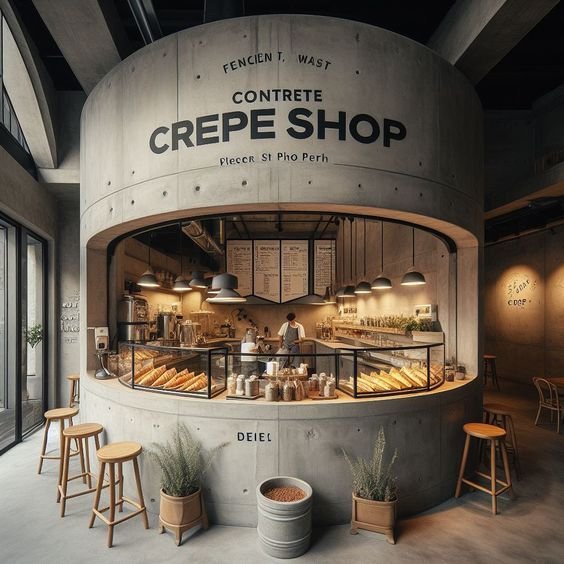
Ideas:
- Open Kitchen Concept: Design an open kitchen layout where guests can observe chefs preparing meals.
- Chef’s Table: Offer a chef’s table experience where guests can dine right by the kitchen, interacting with chefs.
- Display Cooking: Incorporate live cooking stations or counters where chefs prepare food in front of guests.
- Glass Partitions: Use glass partitions or windows to showcase kitchen activities while maintaining hygiene standards.
- Interactive Experiences: Organize cooking demonstrations, workshops, or tastings to engage guests with kitchen operations.
Benefits:
- Transparency: An open kitchen enhances transparency and builds trust with guests, showcasing food preparation standards.
- Entertainment Value: Guests enjoy the interactive and dynamic atmosphere of watching chefs in action, enhancing their dining experience.
- Educational Opportunities: Kitchen attractions provide opportunities for culinary education and appreciation among guests.
- Unique Selling Point: A kitchen-centric design differentiates your restaurant and attracts curious diners seeking a behind-the-scenes experience.
- Positive Feedback: Positive kitchen experiences lead to word-of-mouth recommendations and increased customer loyalty.
13. Common Community Spaces & tables
Unlike those mind-your-food dining spaces, modern restaurants have exclusive communal areas with long tables that allow large groups to dine together without missing out on each other’s conversations. Imagine seeing people as a big happy family enjoying their favorite dishes.
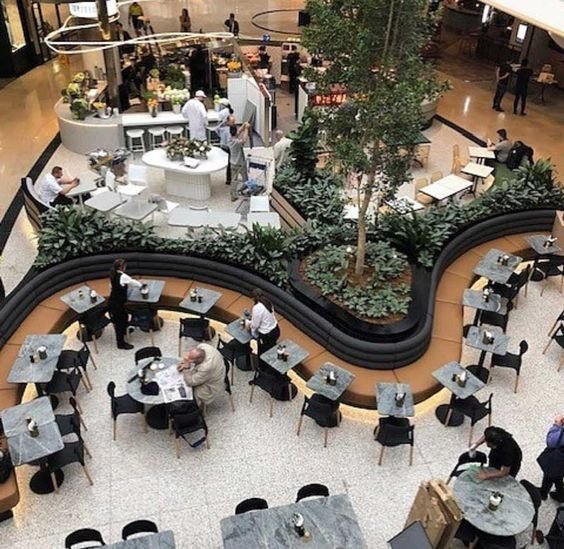
Ideas:
- Long Communal Tables: Install long communal tables to encourage social dining and foster a sense of community.
- Flexible Seating Arrangements: Offer flexible seating options that can accommodate both small groups and larger parties.
- Shared Dining Experiences: Promote sharing-style dishes or family-style dining options to encourage communal eating.
- Events and Gatherings: Host community events, workshops, or themed dinners that bring people together.
- Interactive Areas: Create interactive spaces where guests can engage in activities or games while dining.
Benefits:
- Social Interaction: Communal spaces facilitate social interaction and networking among guests, enhancing the overall dining experience.
- Increased Capacity: Large communal tables optimize seating capacity, accommodating more guests during peak hours.
- Versatility: Flexible seating arrangements cater to diverse group sizes and configurations, improving customer satisfaction.
- Community Building: Regular events and communal dining options strengthen community ties and customer loyalty.
- Unique Dining Experience: Shared dining experiences create memorable moments and encourage repeat visits.

